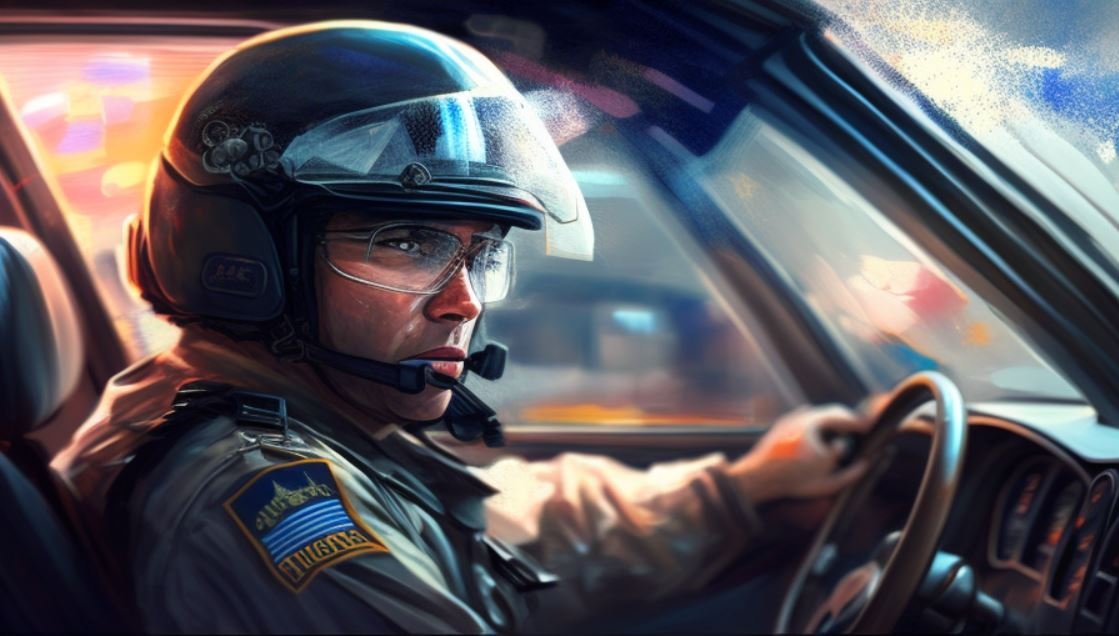Can Police Commandeer Your Car?
If you've ever seen a Hollywood action movie, you've probably witnessed a high-speed chase where a police officer commandeers a civilian's car to chase down a criminal.
While this scenario seems like a work of fiction, you might be surprised to learn that this practice is grounded in reality.
In this comprehensive blog post, we'll explore the concept of police commandeering, its historical roots, and the legal implications surrounding it.
Question: Can police commandeer your car?
Short answer:
Yes, police officers have the right to take your car if they need to. The key word here is “need.” Officers can only ask to take control of a civilian car if it is important. This means that a person, a group of people, or an officer is in immediate or real danger.
Keep reading to learn:
Related Questions
-
In certain circumstances, US police may be able to commandeer your car.
For example, if a police officer needs to quickly respond to an emergency situation and their vehicle is not readily available, they may be able to commandeer a nearby vehicle to use in their response.
However, this would generally be considered an uncommon occurrence and would likely only happen in extreme circumstances.
-
FBI agents may be able to seize your car as part of an investigation if they have a valid warrant or if the car is suspected of being involved in criminal activity.
However, the FBI would typically need to follow specific legal procedures before seizing a vehicle.
-
The state of Illinois has a law that allows police to commandeer vehicles in certain situations, such as during an emergency or if a vehicle is suspected of being involved in a crime.
-
It is possible that police officers may touch a car during a traffic stop or investigation, but it would typically only be done for a specific purpose, such as checking for damage or inspecting the vehicle for evidence.
Officers would generally not touch a car without a valid reason.
Understanding Police Commandeering
Police commandeering refers to the act of a law enforcement officer taking temporary possession of private property to use it in the performance of their duties.
This practice has its roots in common law, an unwritten set of laws based on custom and judicial precedent.
Historically, police officers and even civilians could legally commandeer resources, including horses and ships, to aid in the pursuit of criminals or during emergencies.
In modern times, the idea of police commandeering has been extended to include motor vehicles.
However, commandeering a civilian's car is considered a last resort, only to be used in exceptional circumstances when no other options are available.
Legal Framework and Limitations
In the United States, the legal basis for police commandeering can be found in various state laws and some federal laws.
However, the laws surrounding commandeering are not uniform, and their interpretation may vary between jurisdictions.
One key limitation to police commandeering is the Fourth Amendment, which protects citizens from unreasonable searches and seizures.
Under this constitutional provision, law enforcement officers must show probable cause before seizing property or conducting a search.
Additionally, the commandeering must be considered reasonable under the circumstances.
It is also essential to consider the principle of eminent domain, which allows the government to take private property for public use, provided that the owner is fairly compensated.
While commandeering is a temporary seizure of property rather than a permanent taking, the principles of eminent domain may still apply.
In such cases, the government may be required to compensate the owner of the commandeered property.
Some state laws explicitly allow police officers to commandeer vehicles during an emergency or when in hot pursuit of a suspect.
However, these laws typically require that the officer be in uniform and display their badge or other official identification.
Despite the legal framework, there are limitations on when and how police can commandeer a vehicle.
For instance, officers are generally required to consider the safety and well-being of the vehicle's occupants and other road users. Commandeering a vehicle with passengers or one that is ill-equipped for a high-speed pursuit could be deemed unreasonable.
Moreover, some jurisdictions may impose stricter requirements, such as obtaining a warrant before commandeering a vehicle.
Additionally, the commandeering officer may be held accountable if their actions lead to unnecessary harm or property damage.
Real-World Cases
While police commandeering of vehicles is a rarity in real life, there have been documented cases.
One notable example is the 2005 case of Kerman v. City of New York, where a plainclothes NYPD officer commandeered a taxi to pursue a suspect. The taxi driver, who was not initially aware of the officer's identity, was injured during the pursuit. The court ultimately ruled that the city was liable for the driver's injuries, as the officer's actions were deemed unreasonable.
In another case, Macias v. State of California (1995), a police officer commandeered a tow truck driver's vehicle to pursue a stolen car. The tow truck driver was injured during the pursuit, and the court ruled that the state was liable for the injuries. The court reasoned that the officer should have considered the tow truck's limitations before initiating the pursuit.
Protecting Your Rights
Should you ever find yourself in a situation where a police officer attempts to commandeer your vehicle, it's essential to know your rights and how to protect yourself. Here are some steps you can follow:
Verify the officer's identity: Before complying with any request to commandeer your vehicle, ensure that the individual is indeed a law enforcement officer. They should be in uniform and display their badge or other official identification. If they are in plainclothes, ask for identification and contact the local police department to verify their identity.
Stay calm and composed: It's natural to feel stressed or anxious in such a situation. However, staying calm and composed will help you better assess the situation and make informed decisions.
Determine the reason for commandeering: Politely ask the officer why they need to commandeer your vehicle. Remember that commandeering should only occur in exceptional circumstances when no other options are available. If the officer is unable to provide a valid reason, you may choose to withhold consent.
Protect your passengers: If you have passengers in your vehicle, consider their safety and well-being. Inform the officer of any passengers and ask how their safety will be ensured during the commandeering process.
Document the incident: If possible, use your smartphone or other recording devices to document the interaction. This may be useful later if any legal disputes arise.
Seek legal advice: If you believe that your rights have been violated or if you have suffered damages as a result of police commandeering, consult with an attorney to explore your legal options.
Conclusion
While the idea of police commandeering a civilian's car may seem like a thrilling Hollywood trope, it's essential to understand the legal framework and limitations surrounding this practice.
Police commandeering should only occur in exceptional circumstances, and law enforcement officers must adhere to specific guidelines to ensure the safety of all parties involved.
As a vehicle owner, being aware of your rights and knowing how to protect yourself in the unlikely event of police commandeering can help you navigate the situation with confidence.
Remember to stay calm, verify the officer's identity, and seek legal advice if necessary.












Inside the Investigation: A Deeper Dive into Police Detective Benefits